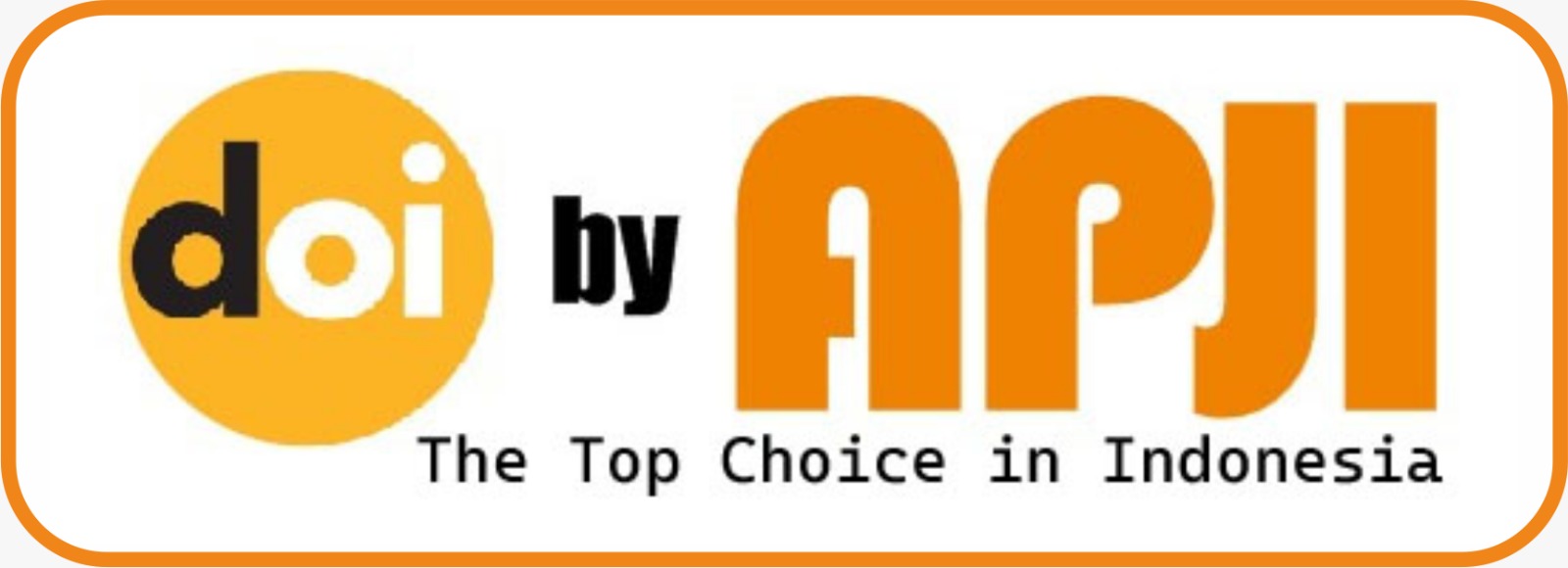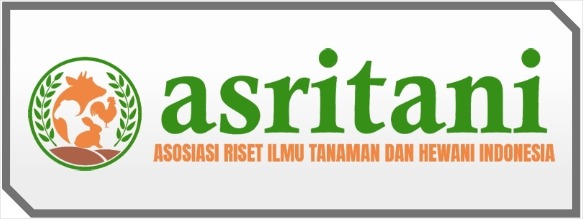Physical Characteristics of Organic Fertilizer Based on Banana Corm and Frond Variations
DOI:
https://doi.org/10.69930/ajer.v2i3.476Keywords:
Banana corm, banana fronds, solid organic fertilizer, physical propertiesAbstract
This study aims to determine the effect of variations in banana corm and banana fronds on the odor and physical properties of solid organic fertilizer made from household waste. In addition, the research also aims to identify the differences in odor and physical characteristics between solid organic fertilizer based on EM4 and that based on banana corm and fronds. The method used is an experimental approach to test the effectiveness of organic fertilizers produced from different raw materials: banana corm, banana frond, rice-washing water, and household waste (predominantly rotten tape). The first treatment used a mixture of banana corm, banana fronds, rice-washing water, and household waste in a 1:1:1:1 ratio. The second treatment consisted of banana fronds, rice-washing water, and household waste in a 1:1:1 ratio. The third treatment included banana corm, rice-washing water, and household waste, also in a 1:1:1 ratio. The fourth treatment used EM4, rice-washing water, and household waste in a ½:1:1 ratio. The results showed that on the first day, all treatments emitted a strong odor of tape and household waste. Over time, an acidic smell began to emerge, eventually turning into a fresh, earthy scent, particularly in treatments with banana corm and EM4. The color of the fertilizer changed from dark brown to blackish brown, indicating successful decomposition. The texture also changed from coarse to more crumbly and homogeneous. The treatment with EM4 showed faster fermentation and a more stable odor compared to the other treatments.
References
1. Astie RRYJ, Triyono B. Studi Potensi Limbah Organik Pujasera Kampus sebagai Pakan Maggot Black Soldier Fly (BSF). Pros Ind Res Work Natl Semin. 2024;
2. Mufarrihah, I. Lazulfa, I. Andriani A. Pemanfaatan Limbah Organik Bekatul Menjadi Pupuk Cair Sebagai Solusi Pupuk Pengganti Untuk Pertanian. Din J Pengabdi Kpd Masy. 2024;4(1):1–5.
3. Kiyasudeen S K, Ibrahim MH, Quaik S, Ahmed Ismail S. Prospects of Organic Waste Management and the Significance of Earthworms. Prospect Org Waste Manag Significance Earthworms. 2016;1–21.
4. Rosariastuti, R., Sumani, S., & Herawati A. Pemanfaatan batang pisang untuk aneka produk makanan olahan di Kecamatan Jenawi, Karanganyar. PRIMA J Community Empower Serv. 2018;2(1):21–9.
5. Bahtiar, S. A., Muayyad, A., Ulfaningtias, L., Anggara, J., Priscilla, C., & Miswar M. Pemanfaatan kompos bonggol pisang (Musa Acuminata) untuk meningkatkan pertumbuhan dan kandungan gula tanaman jagung manis (Zea Mays L. Saccharata). Agritrop J ilmu-ilmu Pertan (journal Agric Sci. 2016;14(1):23–32.
6. Meilani, S. S., Susyani NE. Pemanfaatan Kembali Limbah Batang Pisang Menjadi Kompos. Agroindustrial Technol J. 2021;5(2):13–26.
7. Sari, P. K., Lekat, A., Fajri M. Pemanfaatan Batang Semu Pisang Sebagai Media Tumbuh dengan Berbagai Sumber Unsur Hara Terhadap Pertumbuhan Pre Nursery Kelapa Sawit (Elaesis guinensis Jacg). J Appl Agric Sci Technol. 2017;1(1):37–47.
8. Islam MS, Khatun MF, Alam MK, Haque MA, Anik MFA, Bashar HMK, et al. Effect of Banana Pseudostem Derivative Compost and Foliar Spray of Sap on Nutrient Acquisition, Yield and Sugar Content of Corn in Tropical Soil. J Soil Sci Plant Nutr. 2024;24(3):5505–17.
9. Amilia, E., & Hidayanti N. Pengolahan Pemanfaatan Pelepah Pisang Menjadi Keripik Sebagai Makanan Sehat Dalam Upaya Peningkatan Perekonomian Di Kampung Kemeranggen Kelurahan Taman Baru Kecamatan Taktakan. MULIA (Jurnal Pengabdi Kpd Masyarakat). 2022;1(2):62–6.
10. Nashar N. Prospek Jenis Tanaman Pisang Untuk Dilakukan Oleh Kelompok Usaha Tani. J Ekon Perbank Syariah. 2015;2(1):91–116.
11. Ariyanti M. Air cucian beras sebagai sumber nutrisi alternatif bagi tanaman perkebunan. 2021.
12. Bashir, R., Iqbal, S. A. Thiamine (vitamin B1) helps to regulate wheat growth and yield under water limited conditions by adjusting tissue mineral content, cytosolutes and antioxidative enzymes. Plant Growth Regul. 2023;101(6):629–42.
13. Yetri, Y., Nur, I., Hidayati R. Produksi Pupuk Kompos dari Sampah Rumah Tangga. J Katalisator. 2018;3(2):77–81.
14. Nur, T., Noor, A.R., Elma M. ). Pembuatan Pupuk Organik Cair dari Sampah Organik Rumah Tangga dengan Penambahan Bioaktivator EM4 (Effective Microorganisms). Konversi. 2016;5(2):5–12.
15. Deny S& E. "Membangun Sinergi antar Perguruan Tinggi dan Industri Pertanian dalam Rangka Implementasi Merdeka Belajar Kampus Merdeka ” Analisis Beberapa Hara Kompos Limbah Rumah Tangga sebagai Pupuk Organik Deny. Semin Nas dalam Rangka Dies Natalis ke-45 UNS Tahun 2021 Fak Pertan Univ Muhammadiyah Jakarta. 2021;5(1):495–508.
16. Sari, M. W., Alfianita S. Pemanfaatan batang pohon pisang sebagai pupuk organik cair dengan aktivator EM4 dan lama fermentasi. J Tedc. 2019;12(2):133–8.
17. Chan, S. R. O. S., Achmad, B. S., & Ferdinant F. Pemanfaatan Berbagai Limbah Organik Sebagai Bahan Baku Pembuatan Kompos Menggunakan Decomposer M21. J Agrium. 2023;20(4):331–5.
18. Andraskar J, Yadav S, Kapley A. Challenges and Control Strategies of Odor Emission from Composting Operation. Appl Biochem Biotechnol. 2021;193(7):2331–56.
19. Ana Khalishaa, Dwi Novanda Sari, Stefina Liana Sari, Rani Sukmadewi, Adi Surya Pradipta ANI. Acceleration of Organic Waste Decomposition: A Comparative Study of ASEM-7 Decomposer Efficiency on Several Organic Wastes. J Appl Agric Sci Technol. 2024;8(3):375–83.
20. Jiang Y, Huang J, Luo W, Chen K, Yu W, Zhang W. Prediction for odor gas generation from domestic waste based on machine learning. 2023;156(August 2022):264–71.
21. Nie E, Wang W, Duan H, Zhang H, He P, Lü F. Science of the Total Environment Emission of odor pollutants and variation in microbial community during the initial decomposition stage of municipal biowaste. 2023;861(August 2022):1–9.
22. Mbuligwe SE, Kassenga GR, Kaseva ME, Chaggu EJ. Potential and constraints of composting domestic solid waste in developing countries : findings from a pilot study in Dar es Salaam , Tanzania. 2002;36(2131):45–59.
23. Ashik M, Khan I, Ueno K, Horimoto S, Komai F. CIELAB color variables as indicators of compost stability. 2009;29:2969–75.
24. Asbai, Z., Boutaleb, F., Doublali, F. E., Mrabet, O., Hadidi, M., Bahlaouan, B., … Boutaleb N. Sustainable approach for nutrient release control in organic fertilisers by using phosphogypsum. Int J Environ Stud. 2024;81(2):808–25.
Downloads
Published
How to Cite
Issue
Section
License
Copyright (c) 2025 Dian Nugraheni, Khalis Nadhira Santosa, Nina Chairani Fatimah, Rosita Assyifa Purba, Abraham Tiandno Witjaksono, Hanandya Rahma Dinda Destriani, Eka Nurul Qomaliyah, Himawan Ganjar Prabowo

This work is licensed under a Creative Commons Attribution-ShareAlike 4.0 International License.























